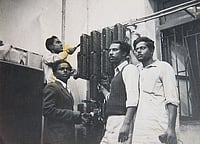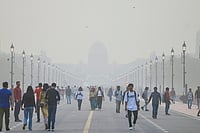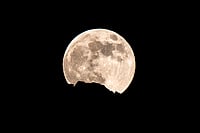Narendra Modi’s final address to the 17th Lok Sabha hardly felt like his last speech as the Prime Minister as he exuded confidence that his party will sweep the polls with more than 400 seats. “The third term of our government is not very far now,” he said on Monday, claiming that he could see it as the “mood of the country”. PM Modi’s reply to the ‘Motion of Thanks to the President’s Address’, which lasted for more than two hours, appeared much like an electoral pitch, critics have observed, as he laid down the report card for the last 10 years of his government and gave a “Modi ki guarantee” of turning India into the third-largest economy in his third successive term.
Prime Minister’s Final Lok Sabha Speech: Did Modi’s Address Follow The Tradition?
PM Modi’s last speech to 17th Lok Sabha echoed a similar tone that most of his Parliament speeches do with a tactical point-by-point attack on the Congress and its “dynasty politics”. His narrative marks a shift from his predecessors.

Prime Minister Modi’s speech at the end of the 17th Lok Sabha was, however, unprecedented. No other prime minister in the past has used the lower house to maximise their vote bank as evidently as Modi has done in his two end-of-term speeches in 2019 and now, in 2024. His narrative marks a shift from his predecessors who used the podium to express gratitude to their fellow parliamentarians and remind people of the successes of their tenure. When Atal Bihari Vajpayee, the last Prime Minister from the BJP, replied to a no-confidence motion against him in 2003, he said that the claims against his government were baseless. While his coalition government was still confident of securing a majority in the next elections, he did not use his Parliament speech to seek votes, rather he remained steadfast in questioning the Opposition's reasoning and seeking a democratic solution. “There should be proper communication and discussion among the parties. Nobody should speak in ultimatum language…We are having a democratic war. We want to bring change peacefully. There is no objection to it if you would like to change the Government,” he said.
Modi’s speech echoed a similar tone and played on the same emotions that most of his Parliament speeches do with a tactical point-by-point attack on the Congress and its “dynasty politics”. In his last Lok Sabha speech on February 13, 2019, Prime Minister Modi had expressed gratitude to his voters for voting a full majority government crediting it to India’s rising recognition in the world. He criticised the Congress for “parivarwaad” politics and said that “the interests of the nation were overlooked just for the interests of one family”. He had also said that India “did not get democracy due to Pandit Nehru, as Congress wants us to believe”, but rather because of the rich history and traditions that date back centuries ago.
Modi’s criticism of the First Prime Minister of India found mention again in this year Lok Sabha speech as he spoke about how Jawaharlal Nehru believed Indians to be lazy and lacking intelligence. He was referring to Nehru’s 1959 Independence Day speech where he said, "Indians generally do not have the habit of working very hard, we do not work as much as the people of Europe or Japan or China or Russia or America.” However, it was not a mere criticism of the people but a historical perspective that Nehru used to emphasise the need for self-reliance and hard work.

The point-and-shoot approach of PM Modi’s final Parliament speeches is particularly different from that of Manmohan Singh, who led the UPA I and II governments till 2014. Political commentors have often credited Modi’s rise to power to his oratory skills–coining acronyms to attack the Congress–whereas Singh was known for his calm and poised approach, although it ultimately came to bite him in the back.
Singh’s concluding Lok Sabha speech in 2009, read by then external affairs minister Yashwant Sinha in his absence, was focused on the developmental achievements of the government, highlighting social and economic growth, and democratic upliftment of the country. He stressed how the schemes in UPA’s first term refined “the relationship between the state and its citizens for a long time to come”. He did not target the Opposition, led by LK Advani, but thanked him for constructive criticism.
“I would be failing in my duty if I don't thank the Leader of the Opposition, Shri Advaniji in always being constructive as we collectively addressed national challenges in spite of occasional disagreements,” he said.

This does not go without saying that while UPA’s first term was largely successful, UPA-II was in the thick of an unending political turmoils with an array of scam allegations that impacted not only Congress’ image nationwide but became evident of the government’s eventual fall. Manmohan Singh, who was often boo-ed at public events over his government’s controversies, had announced before his term-end Lok Sabha speech that he would not seek a third prime ministerial term. Although the Opposition had been at its aggressive best, Singh sat through the mandatory niceties of farewell speeches of the outgoing members.
“In Parliamentary life, there are bound to be differences among parties, but there must also be ways and means of finding pathways to bring minimum amount of consistency and reconciliation so that the ship of the Indian state can move forward,” he said in his bid-adeau Lok Sabha speech. Once again, he steered clear of snarky remarks and jibes at the Opposition but rather thanked them for performing their duties. “Let us hope that out of this strife, out of this tension-filled atmosphere which prevailed some times, there will be birth of a new atmosphere of hope,” he had said.
Manmohan Singh and Narendra Modi are the only two prime ministers to serve two consecutive full terms after Nehru, who had a continuous spell of more than 16 years. Indira Gandhi, who came close with more than 15 years as PM never served two consecutive five-year terms. PM Modi, if elected back to power in the upcoming Lok Sabha election, will become the only prime minister after Nehru to serve more than two consecutive terms.
- Previous Story
 Bypolls In Kerala: Tough Time For Left, Hope For BJP and Yet Another VIP Candidate For Congress
Bypolls In Kerala: Tough Time For Left, Hope For BJP and Yet Another VIP Candidate For Congress - Next Story




















